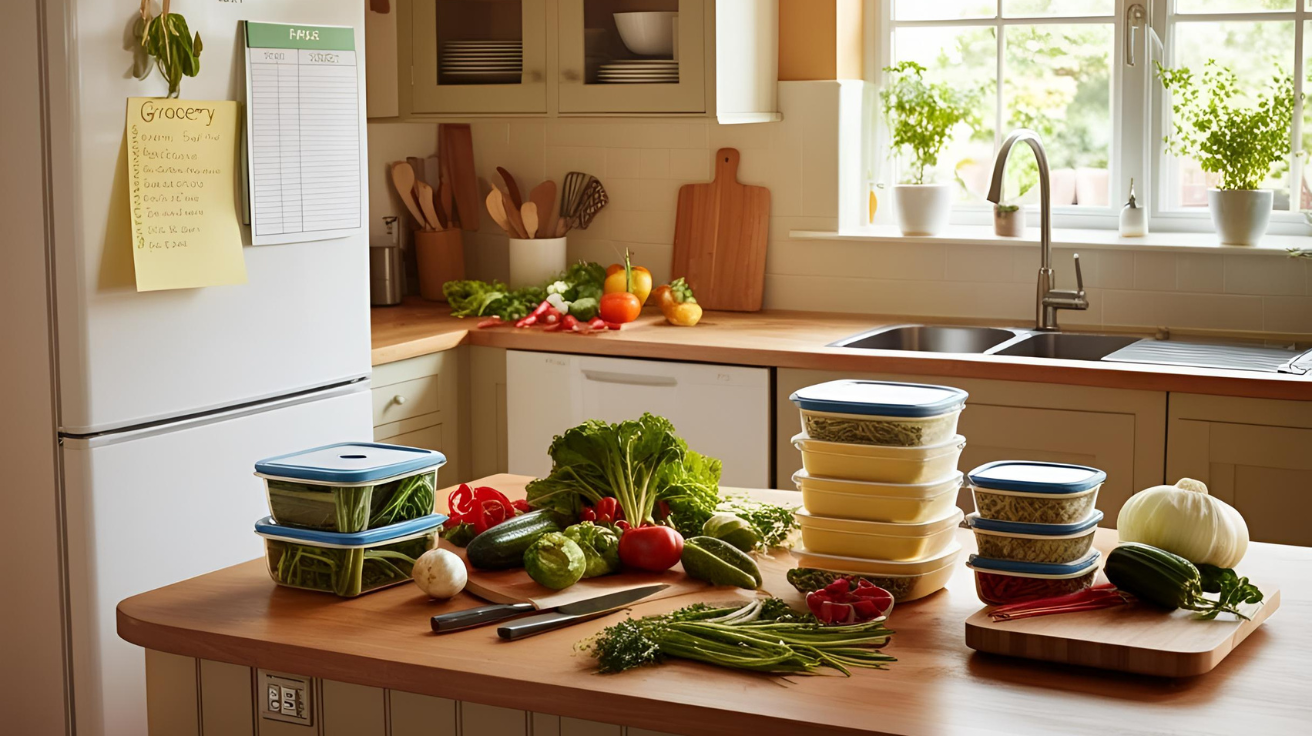Physical Address
304 North Cardinal St.
Dorchester Center, MA 02124
Physical Address
304 North Cardinal St.
Dorchester Center, MA 02124

Let’s face it—eating out is convenient. You don’t have to cook, clean, or even think. But as your bank account (and maybe your waistline) can tell you, those takeout meals add up fast.
Whether you’re spending $10 on daily lunches or $50 on a quick dinner for two, it’s easy to lose hundreds—if not thousands—every month without realizing it.
Here’s the good news: cooking at home doesn’t have to be complicated, boring, or time-consuming. With a few simple habits and a sprinkle of planning, you can make homemade meals part of your routine and save serious money while you’re at it.
So if you’re ready to eat well and pad your wallet at the same time, grab a spatula—we’re diving into how to cook more meals at home (without losing your mind).
Let’s break it down.
A basic homemade meal can cost $2–$5 per serving, while dining out usually runs $10–$20 per meal (more if you’re getting delivery—thanks, service fees and tips). That means if you replace just five takeout meals a week with home-cooked ones, you could save $2,600+ a year. Yes, seriously.
Plus, when you cook at home, you:
It’s a small shift with big impact.
Before we dive into the how-to’s, let’s talk about the mental block many people have:
“I don’t have time.” “I can’t cook.” “Planning meals is overwhelming.” “Cooking is a chore.”
Sound familiar? If so, you’re not alone. But here’s the reframe: cooking at home isn’t about perfection—it’s about progress. You don’t need to be Gordon Ramsay. You just need a few go-to recipes, a stocked pantry, and a little structure.
Cooking doesn’t have to be fancy to be effective. The goal isn’t to impress your guests—it’s to feed yourself without breaking the bank.
A well-stocked kitchen is half the battle. Having the right staples on hand makes cooking feel way less intimidating—and prevents those “there’s nothing to eat, let’s order pizza” moments.
With these basics, you can whip up dozens of meals on the fly.
You don’t need a full-on Excel spreadsheet to meal plan. In fact, the simpler it is, the more likely you’ll stick to it.
That’s it! No need to plan breakfast, lunch, and dinner for every day of the week. Keep it flexible and give yourself grace.
You don’t need a cookbook collection to start cooking at home. All you need are a few tried-and-true recipes you actually enjoy.
Here are 5 beginner-friendly recipes anyone can master:
Toss chicken thighs, broccoli, carrots, and potatoes with olive oil and seasoning. Roast everything on a tray at 400°F for 30–40 minutes.
Cook ground beef, chicken, or lentils with taco seasoning. Serve with tortillas, shredded lettuce, salsa, and cheese. Endless variations!
Boil pasta with veggies, a protein, and a jar of sauce. Add some seasoning and you’re golden.
Sauté any combo of veggies and protein with soy sauce, garlic, and ginger. Serve over rice or noodles.
Throw canned beans, tomatoes, spices, and chopped veggies into a pot. Simmer. Done. (Plus it freezes beautifully.)
Once you get comfy with these, you can start mixing things up and trying new versions.
This one’s a game-changer. Double or triple your recipes and save the extras for lunch or dinner later in the week.
Not only will you save time, but you’ll be way less tempted to grab takeout when your fridge is full of ready-to-go meals.
Let’s be honest—part of what makes takeout so tempting is speed. But your kitchen can compete (if you’ve got the right tools).
If gadgets make your life easier and keep you out of the drive-thru, they’re worth the investment.
Cooking at home = saving money. But it hits differently when you can actually see those savings adding up.
You’ll be amazed at how motivating this can be—especially if you set a goal (like saving for a trip, paying off debt, or building an emergency fund).
Cooking more meals at home doesn’t require gourmet skills, a ton of free time, or a complete lifestyle overhaul. Just a few small tweaks to your weekly routine can make a huge difference in your finances and your health.
Start simple. Keep it flexible. Celebrate your wins—yes, even if that means a frozen lasagna and salad mix on a Wednesday night. It still counts!
Over time, what feels like a chore now might just become something you look forward to. And your wallet will definitely thank you.
Here’s the ultimate beginner’s guide to meal prepping for a week.